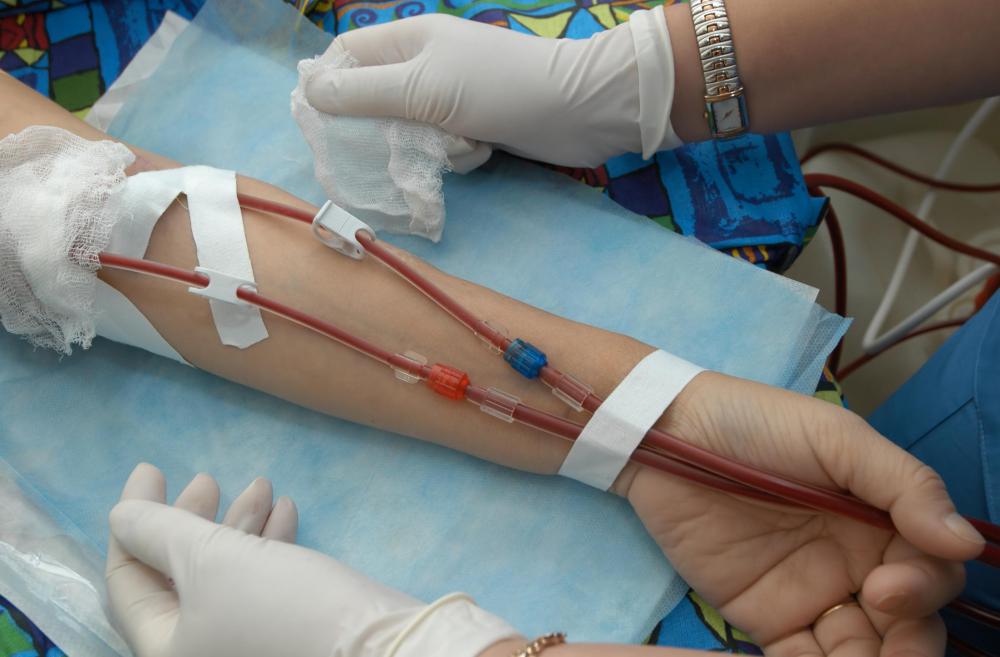At WiseGEEK, we're committed to delivering accurate, trustworthy information. Our expert-authored content is rigorously fact-checked and sourced from credible authorities. Discover how we uphold the highest standards in providing you with reliable knowledge.
What are Blood Products?
Blood is composed of plasma, red blood cells, white blood cells and platelets. These components, also called blood products, collectively form a liquid known simply as the blood. Although there are different types of blood, such as type A, B or AB, the same blood products compose all types. Each of the products has a very specific function in the body and must be present in sufficient amounts in the circulatory system for a person to stay alive and be healthy.
Red blood cells (RBCs), also called red corpuscles or erythrocytes, primarily are responsible for transporting oxygen to every tissue of the body and for carrying carbon dioxide away from tissues. This is the blood product that gives blood its red color. White blood cells (WBCs) also are called white corpuscles or leukocytes. These cells are involved in a person's natural system of defense against microorganisms or germs that can attack the body in many ways, manifested as illness, disease and even cancer. They are required for the production of substances called antibodies, which must be present to help the body fight infection.

Plasma actually is a fluid, but it still is considered one of the four blood products. This watery and salty component comprises more than half of the volume of blood in a person. It also is the carrier for the erythrocytes and leukocytes, acting like a stream or current on which these cells can "ride" to their destination.
The final components of the blood products are platelets, which are very unique in their composition. Instead of being complete cells, platelets are fragments of highly specialized cells that are manufactured by the body and are enclosed within a membrane. When they are activated, they release what are known as chemical factors responsible for the formation of blood clots to help prevent a life-threatening amount of blood loss resulting from internal or external injury.

If blood is viewed under a very powerful microscope, the individual blood products can be distinguished easily. The erythrocytes appear red in color, round and of the thickness of tiny doughnuts with a slight depression in the center. Other blood products with a round shape viewed under strong magnification appear as small and fuzzy spheres. When one of a person's blood components is lost in life-threatening amounts, he or she might need to receive what is known as a blood transfusion to replace them.
AS FEATURED ON:
AS FEATURED ON:















Discuss this Article
Post your comments